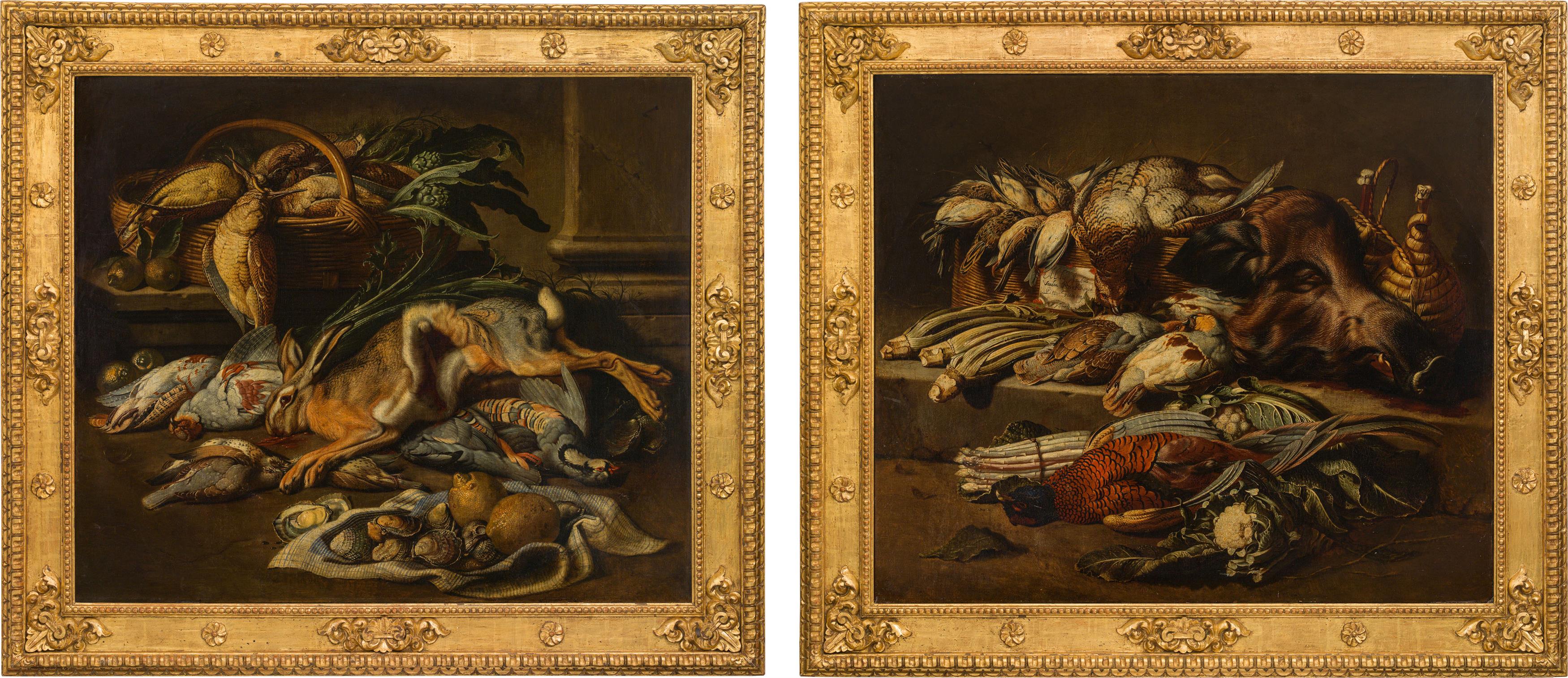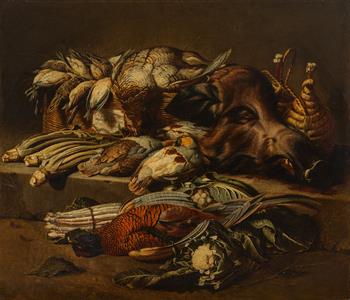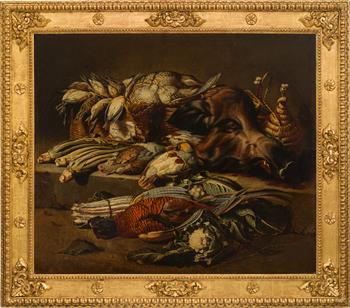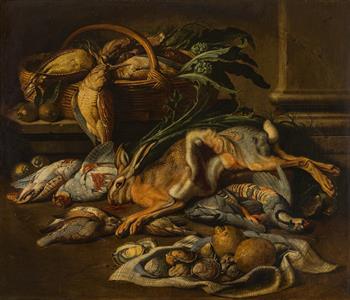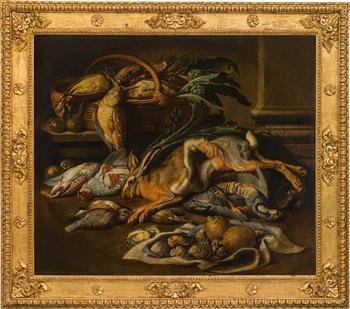1025
Jacob van de Kerckhoven, called Jacopo da Castello
(Amsterdam c. 1637 - 1712 Venice)
„Still life with boar's head, basket with thrushes, pheasants, cabbage, cauliflower, asparagus, wine bottles / Still life with hare, basket with woodcock and artichoke, pheasant, pigeons, birds, oysters and citrus fruits (counterparts)“
oil on canvas; framed
98 x 116 cm each
signed on the painting with boar's head left of centre, on the small card: Al Sig. Jacobus Vanden Kerckhoven / Pittor fiamengho / in Vinegia
Provenance
private collection, Italy
Exhibition
2011 Cagliari, Filatoio di Caraglio, Bestie. Animali reali e fantastici nell'arte europea dal Medioevo al primo Novecento, 26 February - 5 June, no. 77-78
Literature
Alberto Cottino/Andreina D'Aliagno (ed.), Bestie. Animali reali e fantastici nell'arte europea dal Medioevo al primo Novecento, exhibition catalogue, Cagliari 2011, no. 77-78
Estimate: € 25.000 - 50.000
Result: € 21.760 (incl. fees)
Auction is closed.
The two excellent still lifes are made by the Antwerp master Jacob van de Kerckhoven, better known by his Italianated name Jacopo (or Giacomo) da Castello, after the district of Venice where he lived. The artist was a student of the famous still life and animal painter Jan Fyt (1611 – 1661) in Antwerp and lived in Venice from 1685, where he became court painter to the Doge. Evidence of his success in the lagoon city are also numerous mentions of his paintings in the large collections of the time (e.g. Savorgnan, Manfrin; cf. Cottino/D'Aliagno (ed.) 2011, no. 77). The affiliation of the paintings to this artist is undisputed not only by their excellent quality and stylistic features, but also by a trompe l'oeil card attached to the basket of the still life with a boar's head with the inscription: "Al Sig. Jacobus Vanden Kerckhoven / Pittor fiamengho / in Vinegia”. This can also point to a practice common at the time, according to which the game and vegetables to be painted were physically handed over to the artist, so to speak as an "advance".
Both compositions are presented in an unembellished interior. In the first painting, the game is neatly arranged on a diagonal stone step, in front of which a lying pheasant and a cauliflower lean optically towards the viewer. The second depiction is characterized by an elegant, more methodical composition, with the hare as the thematic and visual focal point.

